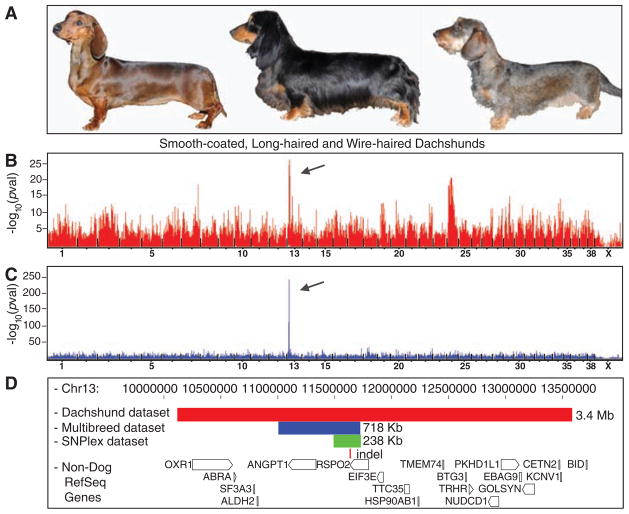Fig. 1.
GWAS and fine-mapping identify RSPO2 as the associated gene for moustache and eyebrow growth pattern (furnishings). (A) Three types of coat segregate in dachshunds: (from left to right) smooth-coated, long-haired, and wire-haired with furnishings. (B) Results of the GWAS in the dachshund using wire-haired dogs as cases and smooth-coated and long-haired dogs as controls. The best P value (3.35 × 10−27), highlighted by the arrow, is located on CFA13 at position 11,095,120. (C) Results of the GWAS for furnishings in the CanMap data set. The arrow highlights the best association (P = 10−241) at CFA13 position 11,659,792. Both P values were obtained with single-marker χ2 analyses. (D) Homozygous regions identified in cases from GWAS and fine-mapping. The red rectangle represents the associated haplotype in the dachshund; the blue rectangle spans the homozygous region from 19 breeds fixed for furnishings based on the multibreed data set; the green rectangle indicates the region of homozygosity in 18 breeds fixed for the furnishings after fine-mapping. A 167-bp deletion, indicated by the small red rectangle, is located within all three haplotypes in the 3′UTR of the RSPO2 gene. The positions of genes in the region are represented by open boxes at the bottom of the figure, labeled to the left, with arrows indicating reading-frame direction (www.genome.ucsc.edu).

